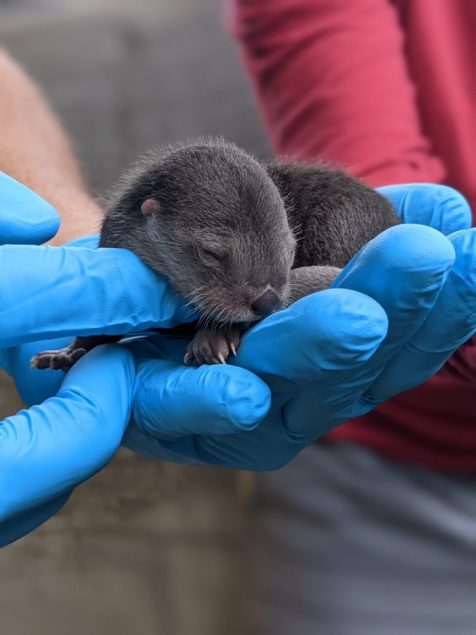|
Getting your Trinity Audio player ready...
|

(Photo by Sean Juman/Zoo Miami)
Zinnia, a 3-year-old North American river otter, gave birth to three pups at the Florida: Mission Everglades exhibit at Zoo Miami on Friday, Feb. 5.
This is not only Zinnia’s first babies, it is the first birth of this species of otter at Zoo Miami.
The pups are still too young to positively determine their gender.
After a pregnancy of approximately two months, the pups, weighing between 136 and 148 grams, were born in a secluded den where all initial indications are that they are being well cared for by Zinnia. She arrived at Zoo Miami in April 2019 from the Roger Williams Park Zoo in Rhode Island where she was born.
Zinnia and the pups will remain isolated behind the scenes for a still to be determined amount of time to ensure that the first-time mother and her babies have minimal disturbances while they bond and grow.
The 5-year-old father’s name is Edison and he arrived at Zoo Miami in October 2016 after being rescued as an orphan and hand-raised by a group called Wild Florida. He is presently separated from Zinnia and the pups so that she can give them her undivided attention which would normally be the case in the wild as the males do not participate in rearing the babies.
North American river otters are extremely active and playful animals that are found in a variety of fresh water habitats throughout much of the U.S. and Canada. They can grow to three to four feet long including the tail and usually weigh between 12 and 25 pounds with the males getting slightly larger than the females. In the wild, they live around 10 years but can live twice that long under human care.
They feed on a variety of aquatic life such as fish, frogs, and crustaceans, as well as eggs, reptiles, birds and small mammals. They can stay under water for several minutes and have a thick protective fur to insulate them against cold temperatures.
They are perfectly adapted for semi-aquatic life with a slender body, a long flat and powerful tail, and short legs with webbed feet. In addition to being quick agile swimmers, they also are capable of running up to 15 mph on land.
Though their populations were threatened decades ago mainly due to trapping for the fur trade, their biggest threat today is due to habitat loss and pollution.





